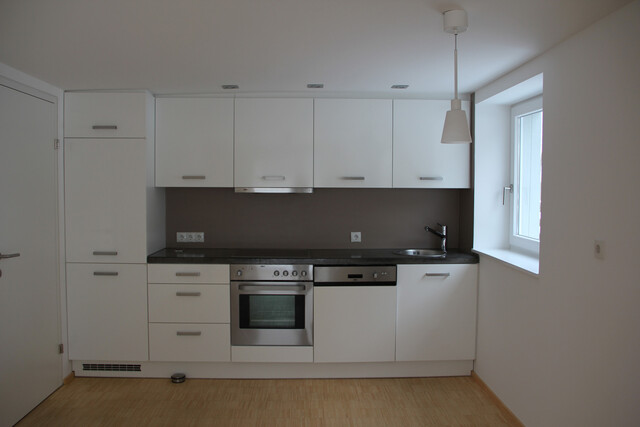Vienna Election 2025: This is the Result Experts Expect

The "non-campaign," as Bachmayer called it, was mainly characterized by "party issues," such as the Lobau motorway. However, these did not take up "much space" in public and media discussions. Bachmayer attributes this primarily to the government formation process at the federal level, which attracted "media attention" and led to a certain "election fatigue." The Vienna election campaign was thus "overshadowed," which could lead to lower voter turnout, according to OGM head Bachmayer.
Vienna Election 2025: Low Voter Turnout Foreseeable
IFDD Managing Director Christoph Haselmayer also predicts a low voter turnout, especially in comparison to other federal states. This will likely "have a six in front." The question, therefore, is who will manage "to mobilize," as the "election mood" has "not reached" the people. However, Haselmayer does not necessarily see this situation as disadvantageous for the SPÖ due to the voter structure. The red-dominated generation over 60 would go to the polls more often than the 40-60-year-olds, among whom the FPÖ is stronger.
With its positioning as the "Vienna party," the mayor's party has done everything right, Haselmayer is sure. The Viennese Reds have tried to convey that everything is "in order" and Vienna is "in good hands," according to Bachmayer. The general topic in Vienna at the moment is security. However, this was not occupied by just one party, which is why Bachmayer sees more of a "cooperative campaign." There was no longer talk of a "duel for Vienna" as in the last elections, according to the pollster.
Ludwig "Outshines" Other Top Candidates
Regarding the positioning of Mayor Michael Ludwig, the two pollsters agree. Ludwig "outshines" all others, says Bachmayer. Haselmayer also sees Ludwig unchallenged at the top. In a hypothetical direct election, he would even perform better than the party and thus "pull it up." Only Dominik Nepp of the Freedom Party would also mobilize as a person in a direct election and perform similarly to his own party, which would not apply to the other top candidates. For Karl Mahrer (ÖVP), among other things, the possible indictment is responsible. The Greens and NEOS are mainly struggling with the anonymity of their top candidates. "With the NEOS, you have to read the political package insert to understand who the top candidate is," says Haselmayer.
Bachmayer sees it similarly: Whether the NEOS can expect a "bonus" from participating in the government is "hard to estimate." Bachmayer does not see the popularity problem with the Green top candidate Judith Pühringer as severe as with Selma Arapovic of the NEOS, who is still "completely unknown." Mahrer is struggling with the "burden" of a "certain minus." The "worst case" would occur if the People's Party achieved a single-digit result, which Bachmayer does not expect. The result will therefore "not upset anyone" at the ÖVP because it is already expected. The pollster sees the FPÖ as the clear election winner, as the expected tripling of the 2020 result leaves "no room for discussion" in terms of the outcome. Although Dominik Nepp acted "actually less conspicuously than expected" in the election campaign, says Bachmayer.
Three-Party Coalition Not to Be Ruled Out
"One to two percent" could ultimately "make the difference" in whether Vienna gets a two-party or three-party coalition, says Haselmayer. It is clear that the SPÖ wants to continue the coalition with the NEOS, but this scenario is currently "massively shaky." The NEOS are often stronger in polls than on election day. If this proves true, it "wouldn't work out anymore." Bachmayer also sees a continuation of Red-Pink as the most likely option, if mathematically possible. They have proven to be "not too difficult a partner" compared to the Greens. Currently, Bachmayer sees little chance of a red-green coalition due to the Greens' thematic focus, keyword Lobau. A government participation of the People's Party would be within the realm of possibility for Bachmayer, as there are indeed "content overlaps."
Haselmayer sees it differently: Before the SPÖ would have to form a three-party coalition, they would decide "for a two-party option with the Greens" despite the content differences. Due to the poll results, the necessity of a three-party coalition cannot be ruled out, according to the pollster. Especially because in a coalition of SPÖ and ÖVP, the question would arise whether to "risk" Mahrer at the top. This would fundamentally contradict the "stability promise" of Mayor Ludwig due to a possible indictment, says Haselmayer. The only sure two-party coalition would be with the Freedom Party, but the SPÖ has generally ruled that out.
Little Movement in the Polls
According to the current APA election trend, the SPÖ is at the top with 38.9 percent, followed by the Freedom Party with 21.7 percent. The Greens (12 percent), ÖVP (11.2 percent), and NEOS (9.3 percent) are in a battle for third place. Both experts see the entry of KPÖ and Team HC Strache as "almost excluded" due to the five-percent hurdle. Since the beginning of the year, the polls have shown little movement. The values differ by at most one to two percentage points, which is within the general margin of fluctuation, says Bachmayer.
(APA/Red.)
This article has been automatically translated, read the original article here.
Du hast einen Hinweis für uns? Oder einen Insider-Tipp, was bei dir in der Gegend gerade passiert? Dann melde dich bei uns, damit wir darüber berichten können.
Wir gehen allen Hinweisen nach, die wir erhalten. Und damit wir schon einen Vorgeschmack und einen guten Überblick bekommen, freuen wir uns über Fotos, Videos oder Texte. Einfach das Formular unten ausfüllen und schon landet dein Tipp bei uns in der Redaktion.
Alternativ kannst du uns direkt über WhatsApp kontaktieren: Zum WhatsApp Chat
Herzlichen Dank für deine Zusendung.


